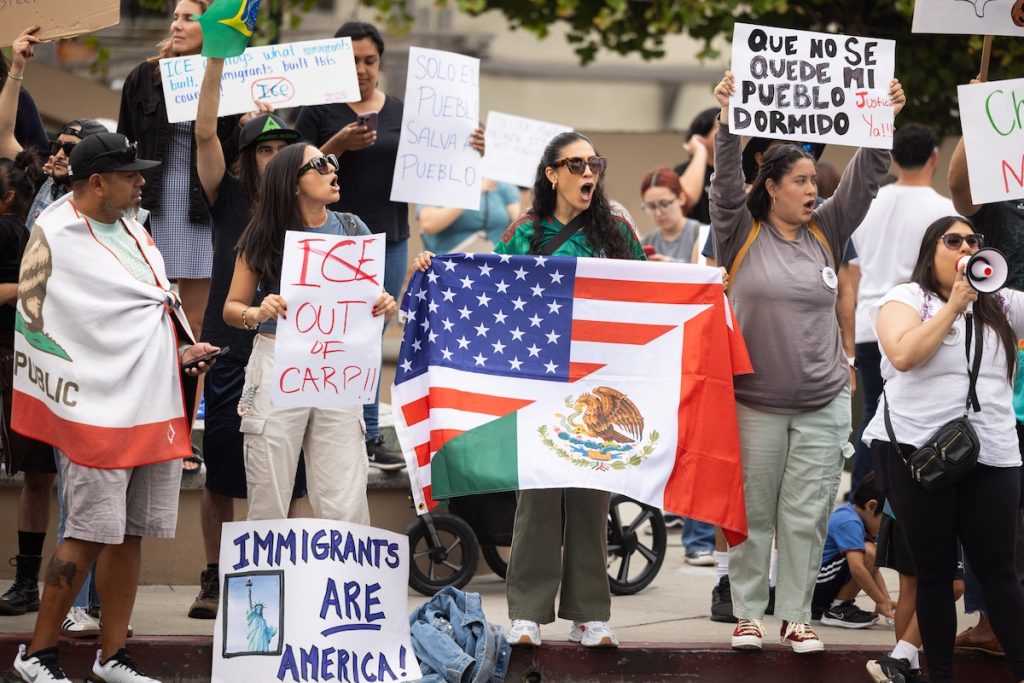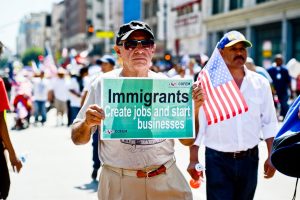Immigration Limits Pose Economic Risks with Shrinking Workforce Ahead: Congressional Budget Office-(CBO) Links Trump’s Immigration Policies to Faster US Population Contraction and Pressure on GDP

From Washington, D.C., the Congressional Budget Office (CBO) has issued a stark warning that the United States could face a contraction in population as early as 2031, nearly a decade sooner than previously projected. The shift, the CBO notes, is largely driven by President Donald Trump’s restrictive immigration policies, which are projected to remove approximately 290,000 immigrants between 2026 and 2029.

The report underscores a fundamental demographic and economic challenge: with fewer immigrants entering and more being forced to leave, the United States risks labor shortages, mounting wage pressures and elevated inflation. Economists caution that this demographic reversal could also weigh heavily on long-term GDP growth, shaking the foundations of US economic competitiveness.
At the heart of the issue is a classic tension between labor supply and economic expansion. Immigration has historically served as a vital offset to declining fertility rates in the US, sustaining workforce growth even as birth rates fell below replacement levels. The CBO projects that with fewer immigrants, the US will struggle to sustain productivity levels, particularly in sectors reliant on migrant labor such as agriculture, construction, healthcare, and services.
“The U.S. economy runs on demographic momentum. When immigration slows dramatically, it disrupts the balance, such as, too few workers chasing too many jobs, driving up inflation and ultimately slowing down growth,” said a senior economist at a Washington think tank.
The economic consequences will not be evenly distributed. Sunbelt states, including Texas, Florida and Arizona, regions that have long relied on immigrant labor for both skilled and unskilled work, are expected to feel acute pressures. The Midwest agricultural belt, already struggling with farm consolidation and climate disruptions, faces heightened risk from labor shortages.
Meanwhile, industries that depend on high-skilled immigration, particularly technology hubs in California, Massachusetts and Washington, warn that stricter visa enforcement could redirect global talent to Canada, the European Union, or Asia, eroding the US’s innovation advantage.
Beyond the numbers, the CBO’s findings point to deeper human and cultural consequences. Family separation policies and deportations are likely to fracture immigrant communities, leaving children, many of whom are US citizens, caught between legal limbo and cultural displacement. Social scientists warn that this could exacerbate inequality and create a “lost generation” of young people navigating instability.
Culturally, diminished immigration challenges the historic identity of the US as a nation of newcomers. Couple of historians of migration noted that immigration has always been a driver of cultural renewal in America. They also strongly believe that Cutting off that flow, risks not only economic stagnation but also cultural insularity.

Politically, the Congressional Budget Office projections place immigration at the center of an already polarized national debate. Supporters of Trump’s policies argue that reduced immigration protects domestic workers and enhances border security. Critics counter that such measures are shortsighted, undermining long-term economic stability and straining America’s global leadership role.
Corporate America has already signaled alarm. Chambers of commerce and major industry associations have lobbied against restrictive immigration measures, warning that the policies threaten supply chains, housing markets and consumer demand. Businesses argue that a shrinking population erodes not only labor supply but also the customer base upon which the US consumer economy is built.
If the US population begins to contract in 2031, as projected, the implications will reach well beyond spreadsheets. A smaller population base implies greater fiscal pressure on Social Security and Medicare, with fewer workers supporting a growing retired population. Inflationary pressures could compound inequality, making housing, healthcare and education increasingly inaccessible to middle and working-class families.
At a deeper level, the projected demographic decline raises existential questions about American identity in the 21st century. Will the US continue to embrace the pluralism that has long been its strength, or will restrictive policies usher in an era of demographic and cultural retrenchment?
The Congressional Budget Office-(CBO) report, frames Trump’s immigration crackdown not simply as a policy shift but as a potential demographic turning point. For the first time in modern history, the United States is confronting the possibility of population decline, driven not by external catastrophe, but by internal political choices.
Practically affirmative, the numbers are clear, as the report concludes that the United States of America cannot sustain robust economic growth without immigration. Restrictive policies carry costs that extend far beyond the immediate horizon, reshaping families, communities and the nation’s future trajectory.







